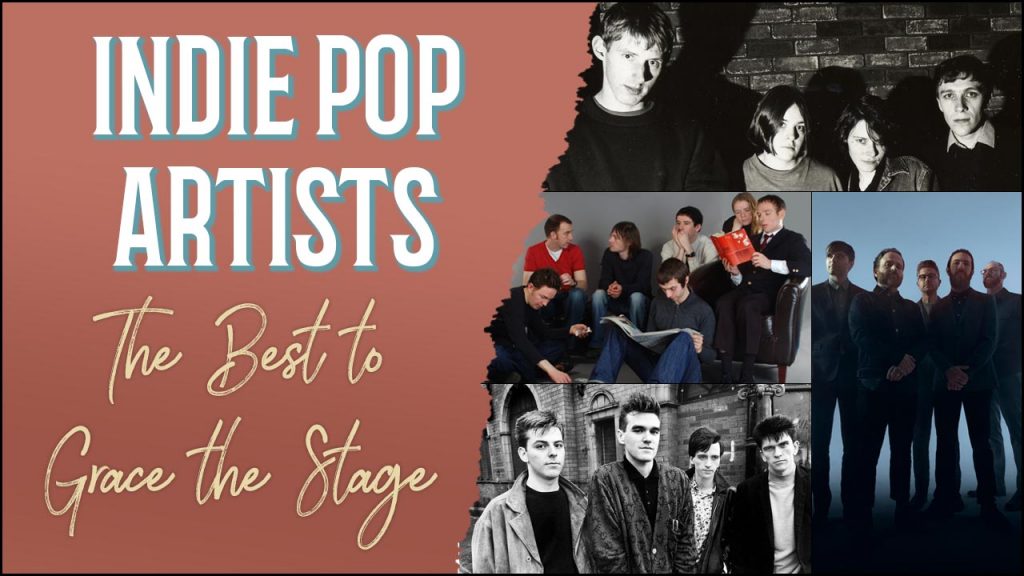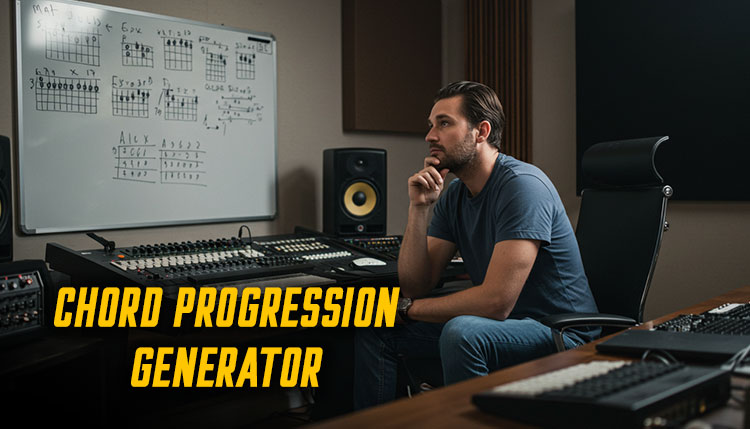If someone held a gun to your head and asked you to define indie pop—what would you say? What is indie pop? What defines or differentiates the genre? Name a few indie pop music artists?
While it’s typically hard to pinpoint the defining characteristics of a music genre, wrapping your head around indie pop is a whole ‘nother beast. When you think about it, indie music is a rather vague category. Depending on your perspective, the definition is either in the name, the sound, or the attitude.
So, What is Indie Pop Music?
At its core, ‘indie’ means ‘independent’ – i.e., independence from mainstream or commercial music. It promotes a do-it-yourself (DIY) bedroom pop vibe.
In theory, indie artists should shun major record labels, right? But what about all the ‘indie’ acts who signed into the major label system but retained their indie status? Think of notable indie artists such as MGMT and Death Cab for Cutie, to name a few.
Plus, indie pop? Like ‘pop’ for popular? Isn’t that a tad bit contradictory? When indie pop emerged in the ‘80s, it was an unpopular sound, and the tag ‘independent’ made sense. But fast-forward to the 21stcentury and there’s nothing unpopular about indie music. If the name does not accurately define the genre, they maybe it’s sound will.
Some people may argue that it’s possible to identify indie pop from its unique production style and sound. Typically, indie pop has a lighthearted and melodic sound generated from rock instruments (bass, guitar, drums, vocals, etc.).
However, some artists deviate from this convention by tossing strings, piano, and electronics into their music production. Some even do away with the guitar altogether – and you can’t really blame them. Indie music promotes experimentation and artists tend to borrow from other fields such as country, folk, electronica, or even Japanese sound – it’s part of being ‘independent’.
If both the name tag and the sound don’t seem to fit the bill, then what is left? One word: attitude! Ignoring the meaning of the words ‘indie pop’ and having an open mind with regard to the sound; the genre is all about the attitude it brings.
The beliefs of its fanatics and what it stands for. It’s something unique that deviates from the norm. In other words, the attitude that oozes from indie pop gels the literal meaning and sound of the genre to create something beautiful – i.e., according to us.
Our Top 10 Indie Pop Music Artists
Regardless of where you stand in the “what is indie pop?” debate, here are our top 10 picks for the indie pop artists who have managed to influence the industry and achieve widespread accolades—DIY style. Keep in mind that this is a mashup of the old and the new (and not in any particular order). So, who are the best indie pop artists/bands to grace the stage?
-
The Pastels
Everything about The Pastels—from their attitude to their music—encapsulates indie pop. Their music was decisively DIY, using simple yet ambitious song structures. Their sound had a naïve attitude and lazy feel that was both intimate and casual.
Although the indie band had its fair share of aficionados since the 80s, they really hit home when they featured in the NME magazine’s C86 compilation. For a quick recap, the C86 is regarded as a pivotal moment in the history of indie pop – and appearing on the cassette alone warrants the celebration of The Pastels as one of the indie greats.
The band—made up of Stephen McRobbie, Aggi Wright, and Katrina Mitchell—also earned a reputation for their role in pushing indie pop to the masses and inspiring subsequent generations. The Glasgow-based indie artists are more-or-less cult heroes in the Glasgow music scene—and penetrating as far as Japan.
-
The Smiths
For a brief 5-year period (between 1982 and 1987), The Smith produced music that is still relevant over 3 decades later. It’s the kind of music that seamlessly crosses the generational divide – and you wouldn’t be surprised to find a 20-year-old, and a 40-year-old listen to a track by the British indie group.
The lyrics and messages in their songs were rooted in relatable everyday experiences—which tapped into the psyche of teenagers at the time. At the center of their genius was the artistry of Johnny Marr and Morrissey. Morrissey crafted allusive and witty lyrics—which were emotional and rather awkward. Marr then leveraged his abilities as a producer, songwriter, and guitarist to dramatize and transform Morrissey’s blunt persona into memorably melodic songs that have managed to stand the test of time.
As a group that helped shape a generation in such a short stint of time, they rightfully earn a spot as one of the best indie pop artists to grace the stage. They offered an alternative to mainstream pop and set the pace for coming generations of indie pop. In 2012, four of their studio albums appeared in Rolling Stone’s“500 Greatest Album of All Time”—further cementing their status as icons.
-
Belle & Sebastian
The distinctive visual aesthetic, sensitive vibe, and a sophisticated sound – these are the traits that have earned Bell & Sebastian a rabid fan base. Since the Scottish indie pop group formed in 1994, they’ve experienced an unprecedented rise in popularity in the indie music scene. Stuart David and Stuart Murdoch recorded the group’s first album (Tigermilk) while enrolled for the Beatbox programme for unemployed musiciansat Stow College. The success of this album prompted Murdoch to recruit other members to the band—and the rest is history.
Along the way, the indie artists managed to earn the acclaim of critics and scoop several awards—including the 1999 BRIT Award for “Best Newcomer,” and the 2014 NME Award for “Outstanding Contribution to Music.” Additionally, a 2005 poll by The Listranked the group as the greatest band in Scotland. Some of their tracks even appeared in television and films. Impressively, the indie pop band is still active today – albeit without some of the original members, including Stuart David.
-
Death Cab for Cutie
If you grew up in the Washington state in the early 2000s, then you’re probably aware that bands such as Death Cab for Cutie and The Postal Service were indie darlings in every teenager’s room. Led by Ben Gibbard (piano, guitar, vocals), they are widely regarded as one of the defining bands in America’s indie music scene. You only need to look at the quality of their albums to understand why they are one of the most relevant indie artists of the past 20+ years. They seem to have a knack for releasing one great album after another—including “The Photo Album” (2001), “Transatlanticism” (2003), “Plans” (2005), “Narrow Stairs” (2008), and “Kintsugi” (2015).
Long-time fans (*our hands raised*) of Death Cab for Cutie, know that the group’s music is based on real-life experiences. Their music is contemplative, subtle, and quite literate—bearing a close resemblance to Cold Play’s style. Gibbard’s dexterous and poetic lyrics are brought to life by the group’s trademark snare drums and simple arrangements.
-
Florence + the Machine
Depending on your sources, Florence and the Machine is many things – some argue it’s a rock band, while others believe they are indie pop artists. This is probably due to the group’s ever-changing ensemble, including keyboards, drums, guitars, and even a harp.
Formed in 2007, Florence and the Machine are a band we can’t afford to ignore for two reasons – their global success and the powerful performances of their lead vocalist, Florence Welch. At the peak of their popularity, Welch’s fiery voice was inescapable. It blasted from apartment windows, echoed through grocery stores, and serenaded our headphones.
For an indie group, Florence and the Machine have made remarkable achievements—making them one of the most successful indie bands in the last decade or so. In a period of 10 years, they’ve won the 2009 Brit Award for “Critic’s Choice,” 2010 Brit Award for “British Album of the Year” (i.e., for their debut album, Lungs), 2010 MTV Video Music Awards for “Best Art Direction,” and NME Awards, among others.
-
The Chills
Hailing from New Zealand—the land of the Kiwis—is The Chills. And true to their moniker, listening to their simple, earnest, and yearning lyrics sent chills down the spines of their devotees. Their sound (aka., Dunedin sound), which earned them a cultic following in their homeland, was inspired by kraut and post-punk rock.
The indie band was formed and led by Martin Phillips who was a master songwriter—and still is up this day. Although the lineup of the band has changed over time, Phillips has remained a constant figure in the group. During their breakthrough years, The Chills were signed to Flying Nun Records—a label that is responsible for bringing Snapper, Straightjacket Fits, and The Clean to the UK music scene. In 2015, they released a remarkable album (Silver Bullets) that was reminiscent of the quality seen in their original indie music.
-
Lana Del Rey
Lana Del Rey is one of those indie artists who attract critics and adoring fans in equal measure. From being labeled a fake back in 2012, she somehow turned the tide of her career for the better. Nowadays, some music circles refer to her as the queen of indie pop. According to Pitchfork, “Her indelible pop melodies are strung together with the grace of a tragic ballet.”
Lana rose to prominence in 2013 with her hit songs, “Summertime Sadness (Remix)” and “Young and Beautiful.” Similar to other artists today, her music often crosses over into other sub-genres of pop—but she still maintains her credibility as an indie artist. Over the years, she has released dream-pop bops such as “Lust for Life,” “Video Games,” “Norman Fucking Rockwell!” and more recently, “Don’t Call Me Angel” alongside Miley Cyrus ad Ariana Grande. So whether you love or hate her, there is no denying that Lana Del Rey is a name that will go into the history books as one of the best indie pop acts of her generation.
-
MGMT
What is a list of the best indie artists without an entry on MGMT? The group—formed by Andrew VanWyngarden (lead vocals) and Benjamin Goldwasser—stood out in an indie generation boasting of acts such as Passion Pit and Yeasayers. The band hit the ground running with their 2007 debut album (Oracular Spectacular), which produced 3 of their greatest singles – “Time to Pretend,” “Kids,” and “Electric Feel.”
In a way, MGMT was more of a movement that revolutionized pop. Their groovy yet fluid sound took the industry by storm and set the stage for other acts such as the Empire of the Sun and Foster the People. They even made ‘hippy headbands’ a thing.
However, they have often been criticized by hardcore indie supporters for signing with Sony’s Columbia Record Label. If you’re among the group of indie music lovers who spit on the idea of major record labels, then you’ll be enthralled to learn that the group recently part ways with Columbia Records. On December 11, 2019, they released their first single (“In the Afternoon“) on MGMT Records – i.e., their independent label. This was followed by “As You Move Through the World” in March 2020. With the resurgence of the group, we can only wait to see what they have in store for the indie music scene.
-
Vincent
If indie pop is all about the uniqueness of the artists and his/her sound, then St. Vincent is the encapsulation of a true indie artist. From her nom de guerre(stage name), her performances, dressing style, to the sound of her music, Annie Clark is not your typical artist. Her music is celebrated for its polysemous lyrics and complex arrangements. She draws inspiration from cabaret jazz, soft rock, electropop, and experimental rock.
Wondering how she arrived at ‘St. Vincent’? In an interview with The New York Times, she explained that her name pays tribute to Saint Vincent’s Catholic Medical Center, where Dylan Thomas (a Welsh poet) died. “It’s the place where poetry comes to die…I like things that are unsettling or a little bit creepy.”
Since her debut release—Marry Me—in 2007, Clark has honed a reputation for her dexterity with the guitar. Although she is a multi-instrumentalist, her ability to generate distorted and fuzzy guitar rhythms is second to none. St. Vincent saw her most notable achievements with her fourth solo album, St. Vincent. Courtesy of the 2014 album, she won her first Grammy Award for “Best Alternative Album” and was praised by critics—including Time, Slant, NME, Entertainment Weekly, and The Guardian.
-
Arctic Monkeys
At the beginning of the century, four Sheffield teenagers (Alex Turner, Jamie Cook, Nick O’Malley, and Matt Helders) wrote songs and distributed homemade demos to anyone to cared to listen. They also went a step further by creating a MySpace account and uploading their tracks to filesharing sites. In an unprecedented turn of events, the group of friends was drawing fans by the masses. Even before the media or major players in the UK music scene had a sniff of the indie pop band, Arctic Monkeys already had a thriving fanbase.
Arctic Monkeys are arguable the first indie artists to get their breakthrough thanks to the internet. With a unique name (no they didn’t use a band name generator) and great music, they unwittingly became internet sensations and never looked back since. In June of 2005, they signed with Laurence Bell’s independent label, Domino—shunning major labels. Their first album, “Whatever People Say I Am, That’s What I’m Not,” made history as the fastest-selling debut album in the UK charts—and earned them the 2006 Mercury Prize. The indie pop artists have been nominated to 5 Grammy Awards and taken home 7 Brit Awards as a testament to their status as one of the best indie pop artists to grace the stage.
Thanks for checking out our list of the top indie pop music artists…!








